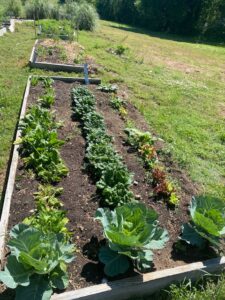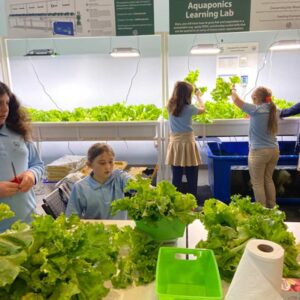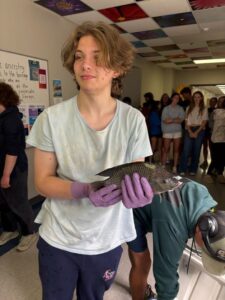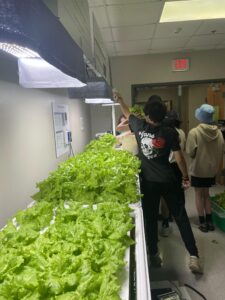School gardens are awesome. When you think of school gardens, you might imagine rows of vegetables planted outside under the sun. While that sounds ideal, the reality is that in most places, outdoor gardens don’t align with the school calendar. Most vegetables grow best during the summer months—when students are away.

In practice, that means a class might plant spring vegetables near the end of the school year, but by the time the crops are ready, students are gone for summer break. The same problem happens in the fall: seeds planted over the summer are ready for harvest after school starts, but students miss the chance to watch the entire process unfold. As a result, outdoor gardens rarely give students the opportunity to experience the full cycle of growing food.
That’s where greenhouses and indoor gardens make all the difference. By creating controlled environments, schools can grow food year-round, perfectly matching the rhythm of the school year. Beyond just growing plants, these spaces open doors to new areas of learning. Students don’t just learn biology—they explore engineering, applied sciences, and even trades like plumbing and HVAC that keep the systems running.
Most importantly, indoor and greenhouse gardens let students experience food production from seed to harvest. That full journey provides a powerful sense of accomplishment. In aquaponic systems, where fish production pairs with vegetable production through microbial ecosystems, students witness nature’s interdependence in a way that’s tangible, clean, and easy to understand.
Even more, these systems produce consistent weekly harvests throughout the year. This consistency allows students to go beyond science lessons: they can run school-based enterprises, selling produce to cafeterias or local restaurants, or donating fresh food to those in need.



When schools bring gardens indoors, they’re not just teaching agriculture—they’re teaching sustainability, entrepreneurship, and the value of community. It’s a hands-on experience that outdoor gardens simply can’t provide on a traditional school calendar.
– Sam Fleming -Executive Director, 100 Gardens
We invite you to learn about year-round school gardens on our website www.100gardens.org. We’re looking for the next school or institution that shares our mission of creating smarter, healthier, and more compassionate people.
Learn about our Aquaponic gardens designed for schools: https://www.100gardens.org/our-aquaponic-gardens-systems/
Learn about how aquaponics can be used to teach many content areas: https://www.100gardens.org/k-12-and-beyond/
